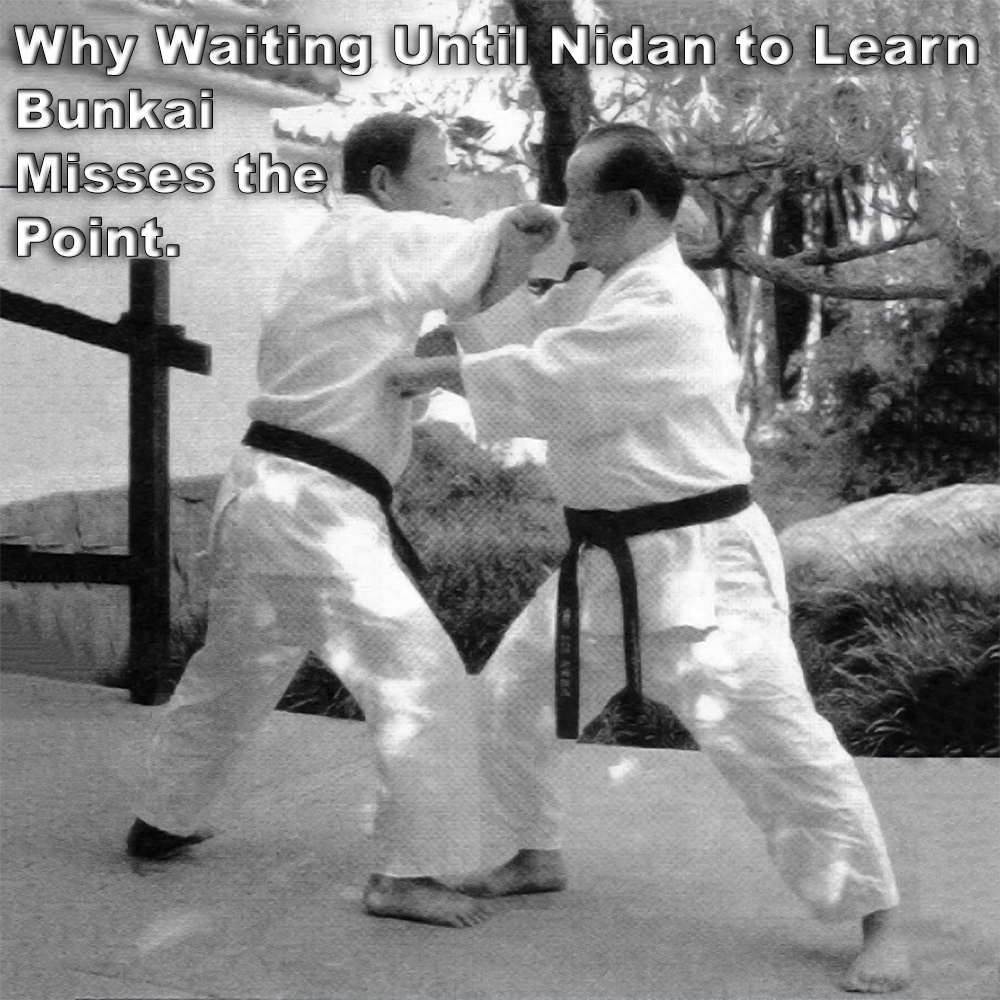
(Approx 2 minute read)
Too many think kata is just choreography – technique after technique, moving in lines. But without bunkai, it’s empty.
.
A comment I received the other day from a Shotokan instructor said he doesn’t teach bunkai until the practitioner is at nidan (2nd dan).
.
Really? Why? Such disregard reflects a misunderstanding of karate itself, doesn’t it?
.
Kata was never intended to be a solitary exercise but rather a complement, a mnemonic, for practical training methods – the two-person drills.
.
Bunkai (分解) literally means “analysis” or “disassembly”. Today it refers to the process of breaking down kata to extract the combat applications and principles embedded within its movements. These extracted techniques are known as oyo.
.
Those who walk through kata in the dojo, or use them just for passing a grade, tend to have a very limited understanding of what they’re doing. If you see kata as a necessary evil, never seeing its relevance to the karate you’re practicing, then you’ll never truly understand your karate.
.
“Real karate is for self-defense and kata bunkai is the main tool for this.” – Yoshio Kuba, 10th dan Goju Ryu, repeating a quote from Gogen Yamaguchi.
.
Bunkai, as I see it, is not just something we do with a partner – it’s something we do to an enemy in the context of civilian self-protection. That was its original purpose, and that’s the mindset needed to extract the information within.
.
Karate should work in a self-protection situation. For me, the study of bunkai is invaluable. The karate-ka who wants to understand his karate deeply also needs to study bunkai – to know why the kata, and ultimately their karate, is the way it is.
.
Some practitioners see kata as just a bundle of techniques. It’s an inferior way to train. You should be able to use single movements, but you also need to see how they fit into the bigger method. That’s how you really understand what the kata preserves.
.
Context is everything when studying kata. Beneath the obvious punches and strikes that show up in an initial analysis, kata also contain escapes, throws, locks – but the underlying principle is a strategy of quick incapacitation and escape.
.
If you’re not studying bunkai and its applications until nidan, then you’re missing the heart of karate.
.
Kata is a library of self-protection principles. Each kata creator encoded their knowledge into the motions they left behind. Kata are not simply a record of techniques – each kata records the principles and strategies of a complete fighting system.
.
Without learning the contents of the encyclopedia that is kata, well, as Choki Motobu put it:
.
“Kata without bunkai is like a ‘shamisen’ (three-stringed Okinawan guitar); nice sound, but empty on the inside.”
.
It’s up to us to play the instrument properly – or we’re just miming to a tune we’ll never hear.
.
If you ignore bunkai, you’re not doing karate. You’re just dancing in a karate-gi.
.
.
Written by Adam Carter – Shuri Dojo
